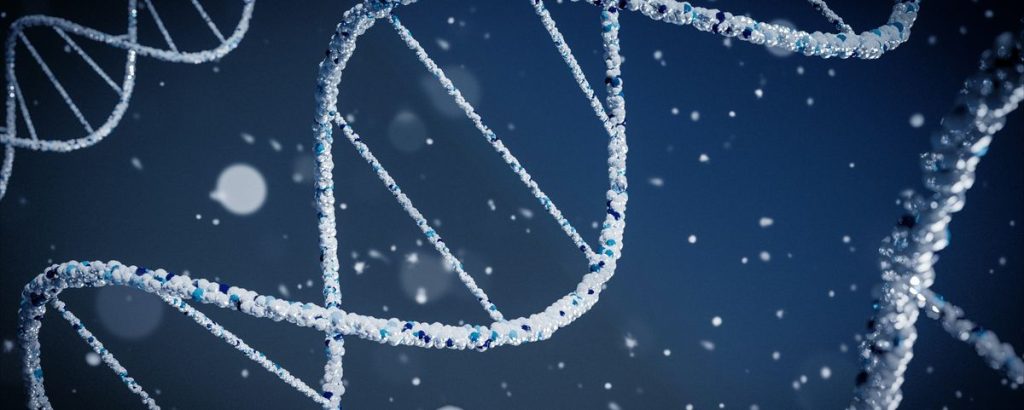Epigenetic regulation – changing gene expression from “from the outside” – is an important part of the overall genetic processes within a cell. Today, a group of scientists revealed a new genetic regulatory mechanism involved in repairing DNA damage in plants, indicating an opportunity to enhance global food security.
In any eukaryotic organism, the cell’s DNA does not exist as a loose strand, but as a highly condensed complex made up of DNA and other proteins called histones. In general, this condensed structure is called chromatin, and this packaging is important in maintaining the integrity of the DNA structure and sequence. However, since chromatin limits the topology of DNA, chromatin modification (by histone modification) is an important form of gene regulation and is called epigenetic regulation. Today, a group of scientists, led by Professor Sachihiro Matsunaga of Tokyo University of Science, has discovered a new epigenetic regulation mechanism, at the center of which is a histone demethylase enzyme called specific lysine demethylase 1 (LDL1). Professor Matsunaga says: “The new epigenetic regulatory mechanism that we discovered is related to DNA damage repair in plants, and we believe it has many real-world applications. This study was published in the American Society of Plant Biologists.
An organism’s genome is constantly subjected to various stresses that cause instability or errors in it, resulting in damage or “break” in the sequence. These breaks are repaired independently through a process called homologous recombination (HR), and thus, HR is essential to maintain genome stability. As with all other gene regulation processes, chromatin structure must be altered for HR to function smoothly. Professor Matsunaga and his team previously discovered a conserved protein called RAD54; They found that RAD54 is involved in chromatin remodeling in the Arabidopsis plant model and thus contributes to genomic stability and the DNA damage response. However, both the recruitment of RAD54 to the HR site and the proper segregation of RAD54 from the site are important for it to exert its effects. When asked about the motivation behind this study, Professor Matsunaga bluntly stated “Our previous study determined that RAD54 helps HR but the mechanisms of recruitment and dissociation were not well understood. Our new study attempts to shed light on these mechanisms.”
Using techniques such as co-immunoprecipitation and mass spectrometry, the scientists first identified previously investigated proteins that interact with RAD54 and regulate its chromatin dynamics during HR-mediated DNA damage repair in Arabidopsis. They then determined, for the first time, that histone demethylase LDL1 interacts with RAD54 at sites of DNA damage. They found that RAD54 specifically interacts with the fourth amino acid methylated lysine on one of the four central chromatin histones, H3 (H3K4me2). The scientists then discovered that LDL1 suppresses this interaction by demethylating H3K4me2. They conclude that LDL1 removes excess RAD54 from sites of DNA damage via H3K4me2 demethylation and thus promotes HR repair in Arabidopsis. Thus, LDL1 ensures the correct dissociation of RAD54 from the HR repair site in DNA.
Welcoming this exciting finding, Professor Matsunaga said: “This discovery is an important addition to plant sciences as well as basic molecular biology. This is an extension of our previous research which showed that RAD54 accumulates at damaged sites in Arabidopsis and that excess RAD54 suppresses damage. , which may be dangerous. Our new study shows that LDL1 aids and promotes DNA damage repair by removing RAD54 from the damaged site.
So why are the results of this study so important? Matsunaga also explains it. Matsunaga explains: “Unlike animals, plants are immutable and therefore more susceptible to environmental stresses such as high temperatures, drought, pathogens, parasites and poor soil conditions, and these stresses inhibit plant growth by causing DNA damage. An effective response to DNA damage is an effective response to DNA damage. critical to ensuring optimal plant growth and survival.Our study reveals a potential epigenetic regulatory mechanism that may enhance the DNA damage response in plants.
Finally, Professor Matsunaga discusses the most important application of this group’s research. “Plants can be artificially treated with LDL1 to control epigenetic modification so that they become more tolerant of stresses such as infection, environmental stresses, and mechanical stresses,” says Matsunaga. We believe this will be beneficial in creating resistant varieties of crop plants with improved growth, longevity and better traits, thus contributing to global food security. »
Story source:
Material provided by Tokyo University of Science. Note: Content can be modified according to style and length.

“Music guru. Incurable web practitioner. Thinker. Lifelong zombie junkie. Tv buff. Typical organizer. Evil beer scholar.”

:format(url)/cloudfront-us-east-1.images.arcpublishing.com/lescoopsdelinformation/6EMKJVECS5DDBDHWA56Y3BNEKM.jpeg)





More Stories
Plants grow mostly in the afternoon
Why should we not confuse academic freedom with the autonomy of science?
A revolutionary proposal from a team of NASA researchers exploring physics